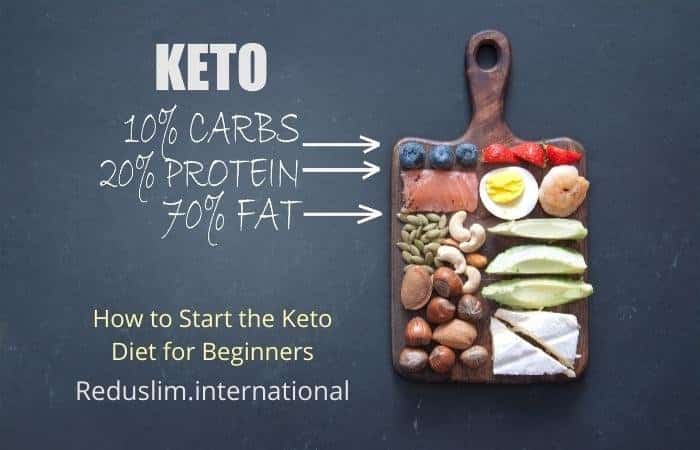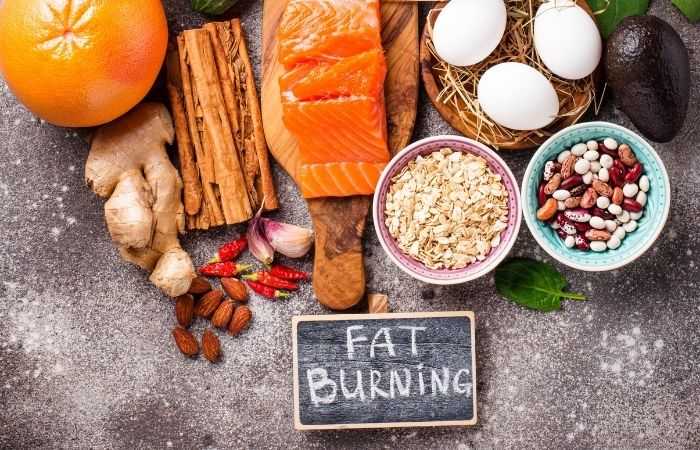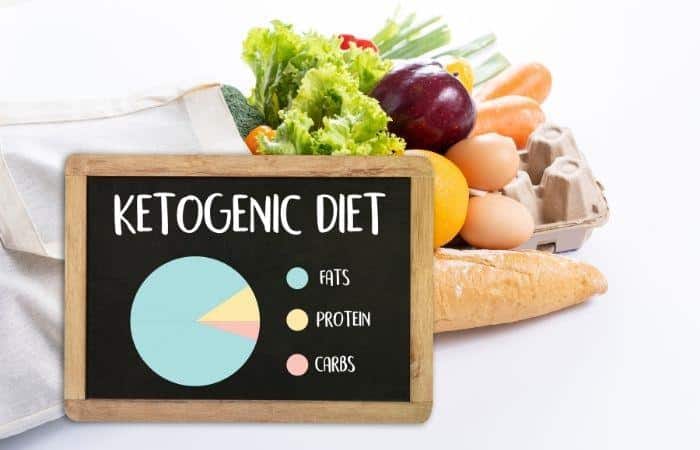The “ketogenic diet” or “keto diet” or just “keto” is a pretty low carbohydrate and high-fat eating plan that shares similarities with the Atkins and other low carbohydrate diets. The main goal of the ketogenic diet is to force your body into a state of ketosis (when your body burns fat for energy instead of carbs).

It requires considerably lowering carbs consumption and swapping it with fat. The decrease in carbohydrates sets you into a metabolic state known as ketosis. When this happens, your body becomes amazingly effective at burning fat for energy, leading to weight loss and other health benefits.
Note for Greeks: If you are looking for someone to guide you through your first Keto Diet journey and live in Greece, KetoGuru.gr will give you everything you need to know about starting Keto.
Read also about how Greeks dealt with unhealthy weight through hundreds of years and how Greeks use Reduslim for hunger suppression, mood improvement, and vitality. It is not necessarily the sole solution available; however, it has acquired fame due to its efficiency.
Table of Contents
Let’s Talk About Keto!
An average human brain will only use glucose for fuel, but your brain uses a different form of energy called ketones on the ketogenic diet. The liver creates ketones from fatty acids in response to a deficient carbohydrate intake (less than 50g per day). The main goal of the Keto is to get you into this state of “ketosis,” where you’re burning fat for fuel.

The keto diet falls under the LCHF (low-carbohydrate/high-fat) diets, including the Atkins Diet and the Paleo Diet. The premise of these diets is that by reducing your carbohydrate intake (and therefore eliminating sugar), you can force your body to burn stored fats for fuel instead of carbs like glucose, leading to weight loss.
The objective of a ketogenic diet plan is to put one’s body into ketosis. When your body starts burning fat instead of carbohydrates as its primary energy source when this happens, your metabolism becomes super-efficient, and you start getting lots of nutrients, which can help people trying to lose weight.
There are many ways to start a keto diet, but it can be challenging to tell your girlfriend or boyfriend that you want to do this. You must explain why you want to start the diet and show them how it will benefit both of you.
Other Notable Diets
- The pegan diet combines principles from the paleo and vegan diets, with some exceptions. You can eat fruit, vegetables, legumes, nuts, and seeds. The most significant difference is that dairy products like cheese and yogurt allow.
- The paleo diet has been around for quite some time, but it is made up of foods like meat (particularly grass-fed beef), fish (without mercury), eggs (from free-range chickens), and vegetables. In this diet plan, plant oils are also okay; olive oil is the most common choice.
- The 1500 calories vegan diet consists of grains like rice or quinoa, beans or lentils (or both), vegetables like broccoli or carrots, fruits like strawberries or bananas, and plant-based milk made from soybeans instead of cow’s milk.
- The intermittent fasting for women method is a dieting technique that involves restricting food intake to a certain time period, such as 16 hours of fasting and 8 hours of eating. It has been proven to be an effective way to lose weight and improve health. It can also help you live longer and reduce the risk of diabetes, heart disease, cancer, Alzheimer’s disease and other age-related diseases.
How Do I Start Keto?
Unlike most fad diets that are hard to stick to, the keto diet is straightforward. You need to be conscious of your carb intake, eat enough protein, get enough sleep, drink lots of water, and exercise regularly. That’s all there is to it!
To start a Ketogenic Diet, you first need to reduce your carb intake to 20-50 grams per day. You can make sure that you are not overeating by using apps like MyFitnessPal or Cronometer to track your food intake and calorie count.
The goal of Keto is to force your body into a state of ketosis, where it burns fat as its primary fuel source. You can do this by following the macronutrient ratios for Keto:
- 75% Fat, 20% Protein, 5% Carbohydrates
- 80% Fat, 15% Protein, 5% Carbohydrates
- 85% Fat, 10% Protein, 5% Carbohydrates
- 90% Fat, 5% Protein, 5% Carbohydrates
Carbohydrates are limited to 20-30 grams per day with a ketogenic diet. You should eliminate processed foods with added sugar or carbohydrates from one’s diet entirely due to their effect on insulin levels.
What Are 3 Benefits Of a Keto Diet?
There are many reasons people choose to follow a ketogenic or a keto diet.
- The first is to lose weight and maintain a healthy body mass index.
- The second reason is that the ketogenic diet helps stabilize blood sugar levels and reduce insulin levels in people with diabetes.
- And lastly, there is evidence to indicate that the ketogenic way of eating may even be good for your brain as it produces more energy from fat than carbs or sugar, which can increase mental clarity.
People who follow the Ketogenic Diet experience significant weight loss in a short period because they eliminate carbs from their diet, which, in turn, gives them more energy for the day.
The keto diet is successful in treating epilepsy. The ketogenic diet is currently being studied to treat other brain disorders such as Alzheimer’s disease and Parkinson’s disease.
Studies have also shown that it improves memory, brain function, and mood. And finally, the keto diet can help control seizures in children with epilepsy, which has become so popular for people with epilepsy.
What Is Ketosis?
Ketosis is a natural process where your body burns fat for energy instead of carbohydrates. The metabolic process occurs when the body has limited access to glucose. The liver breaks down fats into ketones, used as fuels by cells in the brain, heart, muscles, and other organs. For this time, you are burning fat instead of sugar to power your body. There are so many benefits to being in ketosis- one being weight loss.
Ketosis has long been used to deal with epilepsy since the 1920s and was the first effective in 1968. Ketosis has other benefits, including weight loss, lowering blood pressure, and reducing inflammation.
Some of the best ways to get into ketosis are through fasting or exercise – both methods can help kick-start ketosis by lowering blood sugar levels. Other supplements on the market claim to help induce ketosis; these include MCT oil and potassium/magnesium, which can, at best, delay the onset of ketosis.
Why Is The Keto Diet Bad? (The Antilogue)
The keto diet is not a long-term lifestyle choice. While it does have some short-term health benefits, the ketogenic diet can be significantly limited in the long run.
Many people trying to burn fat will see results because they will avoid feeling hungry all the time. But people trying to gain weight may not do as well because they won’t be able to eat enough food with this diet plan. And some people may experience side effects like headaches or bad breath due to how drastically their bodies change when they switch from burning carbohydrates as their primary fuel source rather than burning fat.
There are lots of reasons why the keto diet is terrible. First of all, it is not sustainable. The human body needs carbs to function correctly, and if it doesn’t get them, it will go into starvation mode and burn muscle instead of fat. There are also a lot of side effects that come with the keto diet, such as bad breath, constipation, cardiovascular disease, and even cancer.
The ketogenic diet may lead to side effects such as bad breath, constipation, or even kidney stones. Other potential risks include an increased risk of cardiovascular disease and osteoporosis.
In conclusion, ketogenic diets may be not the answer to weight loss or a way to control your blood sugar levels. It could be a good idea to instead devoted to eating a balanced diet, in which you include protein and good carbs in your meals.
Is The Ketogenic Diet Right For Me?
Start with the basics and what Keto is. It’s a diet that primarily consumes healthy fats, high-quality proteins, and low-carb vegetables while minimizing or eliminating the intake of sugars, processed foods, grains, legumes, and other starchy vegetables.

The benefits are incredible for people who want to lose weight because it puts your body into a state called “ketosis,” where it starts breaking down fat instead of carbohydrates to fuel your body. It also causes one’s appetite to be suppressed, which can lead to dramatic weight loss since you’re not being tempted by all of the foods that typically can’t be eaten on this diet.
The ketogenic diet is a popular nutrition plan that can be an excellent tool for weight loss. But before you make the switch, it’s essential to know if this diet is proper for you.
The ketogenic diet typically consists of 5% carbs, 20% protein, and 75% fat. The idea behind the keto diet is that when your body switches from burning carbohydrates to burning fats as its primary energy source, it causes your body to release an important hormone called ketones. This change helps suppress hunger while also supplying energy for the brain and other organs in your body.
Some other things that influence the basic metabolic rate are:
- Age
- Genetics
- Body Weight
- Gender
- Height
Losing weight can be a challenge when you’ve got a lot of stubborn fat slowing down your metabolism. Good fat burners have a combination of potent ingredients that raises metabolism and reduces body fat, can assist users in losing as much as 12 pounds per month.
Some people who try the keto diet find that sticking with it isn’t easy because they miss the food that doesn’t fit into this plan- like bread or pasta.
One of the keto diet’s most significant advantages is its ability to promote weight loss without a calorie restriction, which can be difficult for some people since cutting calories can lead to hunger and cravings.
